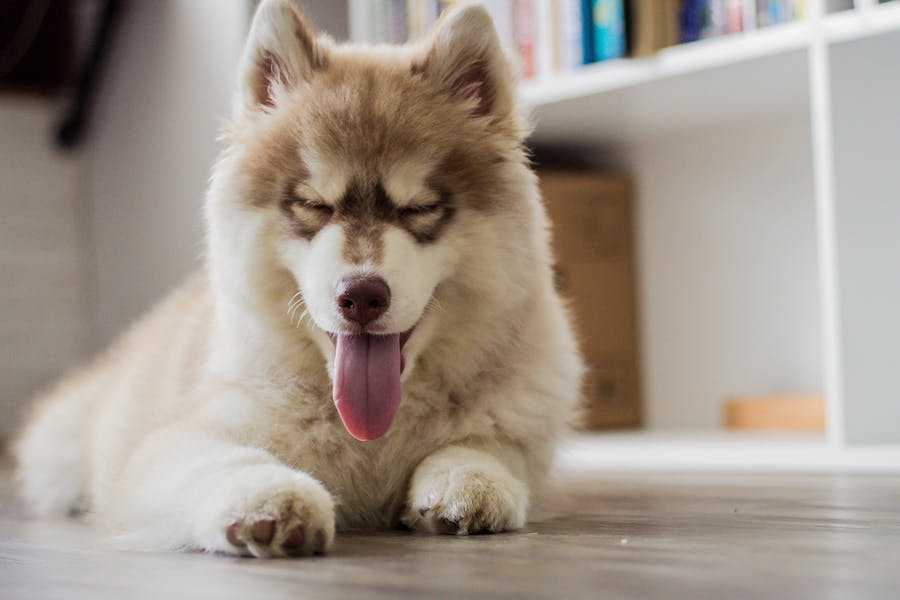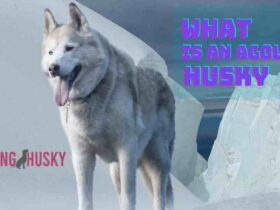Bathing a Husky, known for its striking appearance and thick double coat, is an essential aspect of their care, but it can be challenging for many owners. This breed requires specific grooming techniques to maintain its coat’s health and manage shedding. Understanding how to bathe a Husky properly ensures their cleanliness, promotes overall skin and coat health, and strengthens the bond between you and your pet. This article will guide you through the steps to make bath time a positive experience for your Husky, from choosing the right products to mastering the bathing technique, ensuring your furry companion remains happy and healthy.
How To Bathe A Husky?
Bathing a Husky requires a delicate balance of the right techniques and products to maintain their unique double coat. Here’s a detailed guide on how to effectively bathe a Husky:
Preparation: Start by choosing a suitable location for bathing your Husky, like a bathtub or an outdoor area if the weather permits. Gather all necessary supplies beforehand, including a dog-specific shampoo, conditioner (if needed), a large towel, a brush, and a non-slip mat for the bathing area.
Brushing: Before introducing your Husky to water, thoroughly brush their coat. This helps remove loose fur, dirt, and any tangles. Pay particular attention to areas prone to matting, like behind the ears and under the legs. Using a de-shedding tool or undercoat rake can be particularly effective for Huskies.
Wetting the Coat: Gently wet your Husky’s coat with lukewarm water. Avoid hot water as it can cause discomfort and damage their skin. Ensure that the water penetrates through the dense outer coat to the undercoat. A handheld showerhead or a pitcher can be helpful in this step.
Applying Shampoo: Use a high-quality dog shampoo, preferably one formulated for double-coated breeds. Apply the shampoo evenly across the coat, working up a good lather. Be gentle yet thorough, and avoid getting shampoo in their eyes, ears, or nose.
Rinsing: Rinse thoroughly to ensure all the shampoo is washed out. Residual shampoo can irritate the skin and cause itchiness. This step might take longer than expected due to the thickness of a Husky’s coat.
Conditioning (Optional): If using a conditioner, apply it after rinsing the shampoo. This can help keep the coat smooth and more accessible to brush post-bath. Rinse the conditioner thoroughly as well.
Drying: Huskies have a thick coat that holds water so drying can be time-consuming. Start by gently squeezing excess water from the coat, then use a towel to pat dry. You can also use a blow dryer in a superb setting, keeping it moving to avoid concentrating heat in one area.
How To Choose The Right Bathing Products?
Choosing the right bathing products for your Husky is crucial to maintaining their distinctive coat and skin health. Here’s a guide to help you select the most suitable products:
Dog-Specific Shampoo:
Always use a shampoo formulated specifically for dogs. Human shampoos can disrupt the pH balance of a dog’s skin, leading to dryness and irritation. For Huskies, a shampoo designed for double-coated breeds is ideal as it helps manage their thick fur and undercoat.
Ingredients to Look For:
Seek shampoos with natural, gentle ingredients. Aloe vera, oatmeal, and shea butter are excellent for moisturizing and soothing the skin. Hypoallergenic or medicated shampoos may be beneficial for Huskies prone to skin issues.
Avoid Harsh Chemicals:
Avoid shampoos containing harsh chemicals like parabens, sulfates, and artificial fragrances. These can cause skin irritation and may lead to more severe skin conditions.
Conditioners:
While not always necessary, a good quality dog conditioner can help detangle and smooth the Husky’s coat, making it easier to manage. It also adds moisture, which is beneficial, especially in colder climates.
Detangling Sprays:
Consider using a detangling spray if your Husky has a particularly tangle-prone coat. These sprays can help ease knots and mats, mainly during brushing sessions.
Flea and Tick Control:
If you live in an area prone to fleas and ticks, consider using a shampoo that protects against these parasites. However, always consult with your vet before using any medicated products.
Deodorizing Products:
A deodorizing spray or wipes can be a handy solution for Huskies who tend to get smelly between baths. Choose products with natural ingredients that are safe for use on dogs.
Waterless Options:
For quick clean-ups or during colder months, waterless shampoos or dog wipes can be helpful. These are great for spot cleaning and are convenient when a full bath isn’t possible.
Importance Of Brushing A Husky’s Coat Before Bathing.
Brushing a Husky’s coat before bathing is an essential step in their grooming routine, offering multiple benefits:
Huskies shed heavily, especially during the change of seasons. Brushing before a bath helps remove a significant amount of loose fur, which would otherwise end up in the bath, potentially clogging drains and creating a mess.
The dense and long fur of Huskies is prone to tangling and matting. Brushing out these tangles and mats before getting the coat wet is crucial. Wetting matted fur can make the mats tighter and more challenging to remove.
Brushing helps distribute the natural oils the skin produces throughout the coat. These oils are vital for maintaining the health and sheen of the fur. The even distribution of oils also helps achieve a more effective and clean bath.
Brushing allows you to inspect your Husky’s skin for any issues such as fleas, ticks, dry patches, or irritations. Identifying and addressing these problems before a bath can prevent further irritation caused by water and shampoos.
A well-brushed coat allows water and shampoo to penetrate more deeply and evenly. This results in a more thorough clean, ensuring that all parts of the coat and skin are adequately washed.
A shorter and more efficient bath can be less stressful for Huskies, especially those not fond of water. Since brushing removes dirt and loose fur, bathing can be quicker and more pleasant.
Post-bath grooming becomes much easier if the coat is well-brushed beforehand. It prevents the formation of new tangles during the drying process and makes the final brushing and fluffing smoother.
A Step-By-Step Guide To Bathing A Husky
Bathing a Husky is a multi-step process that requires patience and attention to detail. Here’s a detailed step-by-step guide to ensure a practical and pleasant bathing experience for your Husky:
- Pre-Bath Brushing: Thoroughly brush your Husky’s coat to remove loose fur and dirt and detangle any knots. Pay special attention to areas prone to matting, like behind the ears and under the legs. This step is crucial for a smoother bathing process.
- Prepare the Bath Area: Set up your bathing area with all necessary supplies: dog-specific shampoo, conditioner (if using), a large towel, a non-slip mat, and a brush. Ensure the water temperature is lukewarm, as hot water can be uncomfortable for your dog.
- Wetting the Coat: Slowly introduce your Husky to the water, wetting the coat thoroughly. A handheld showerhead or a gentle spray hose is ideal, as it allows you to control the water flow and ensure that the topcoat and undercoat are entirely wet.
- Applying Shampoo: Apply a generous amount of dog-specific shampoo to your Husky’s coat. Massage it in gently but thoroughly, creating a good lather. Be careful to avoid sensitive areas like the eyes and ears.
- Rinsing: Rinse out the shampoo thoroughly. It’s important to ensure no soap residue remains, as it can cause skin irritation. This might take some time due to the thickness of the Husky’s coat.
- Conditioning (Optional): If you’re using a conditioner, apply it after the shampoo has been thoroughly rinsed out. This can help in keeping the coat smooth and more manageable. Rinse the conditioner thoroughly as well.
- Drying: Use a large towel to pat dry your Husky’s coat gently. Avoid rubbing, as this can cause tangles. You can also use a blow dryer on a cool or low heat setting, but keep it moving to avoid concentrating heat in one area.
Bottom Line
Bathing a Husky effectively involves a series of steps tailored to their unique double coat. Begin with a thorough pre-bath brushing to remove loose fur and detangle the coat. Prepare the bath area with the right supplies, and use lukewarm water for comfort. Apply dog-specific shampoo and rinse thoroughly, considering an optional conditioner for coat health. Dry the coat gently, avoiding harsh rubbing, and finish with a post-bath brushing to fluff the coat. Throughout the process, ensure your Husky’s comfort and safety, and reward them post-bath to create a positive association with bathing. Regular, proper bathing keeps your Husky clean and promotes overall skin and coat health.
FAQ’s
Q. How often should a Husky be bathed?
A. A Husky should typically be bathed every three to six months. However, this can vary based on their activity level and environment. Frequent baths are not necessary for Huskies unless they get filthy or have a skin condition requiring more regular bathing, as a veterinarian advises. Over-bathing can strip their coat of natural oils, leading to dry skin.
Q. Can I wash my Husky with cold water?
A. It’s not recommended to wash your Husky with cold water. Instead, use lukewarm water. Cold water can be uncomfortable for your dog and may make the bathing experience stressful. Lukewarm water is more soothing and effective for cleaning and rinsing their thick coat.
Q. How long can a husky go without a bath?
A. A Husky can typically go several months without a bath, often around 5-6 months. They have a self-cleaning coat that doesn’t require frequent washing. However, this can vary based on activity level, environment, and overall health. Regular brushing is crucial for maintaining their coat’s health.







Leave a Reply